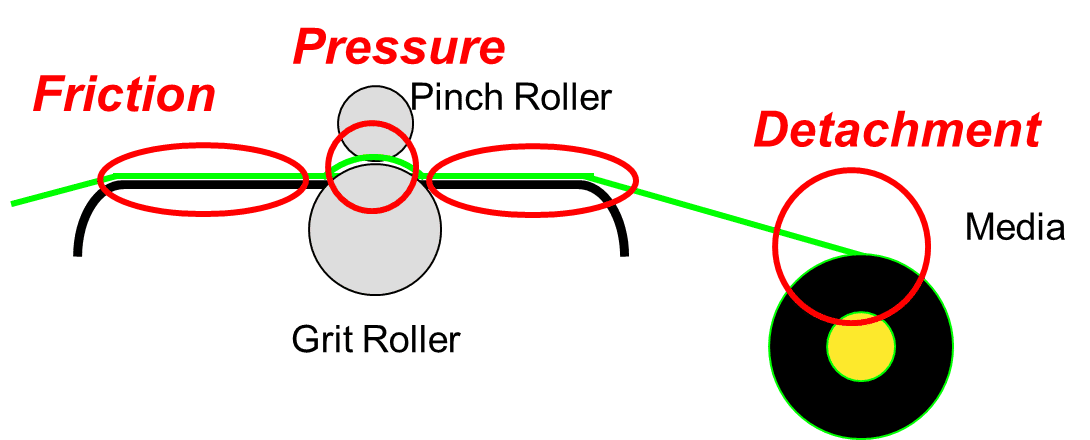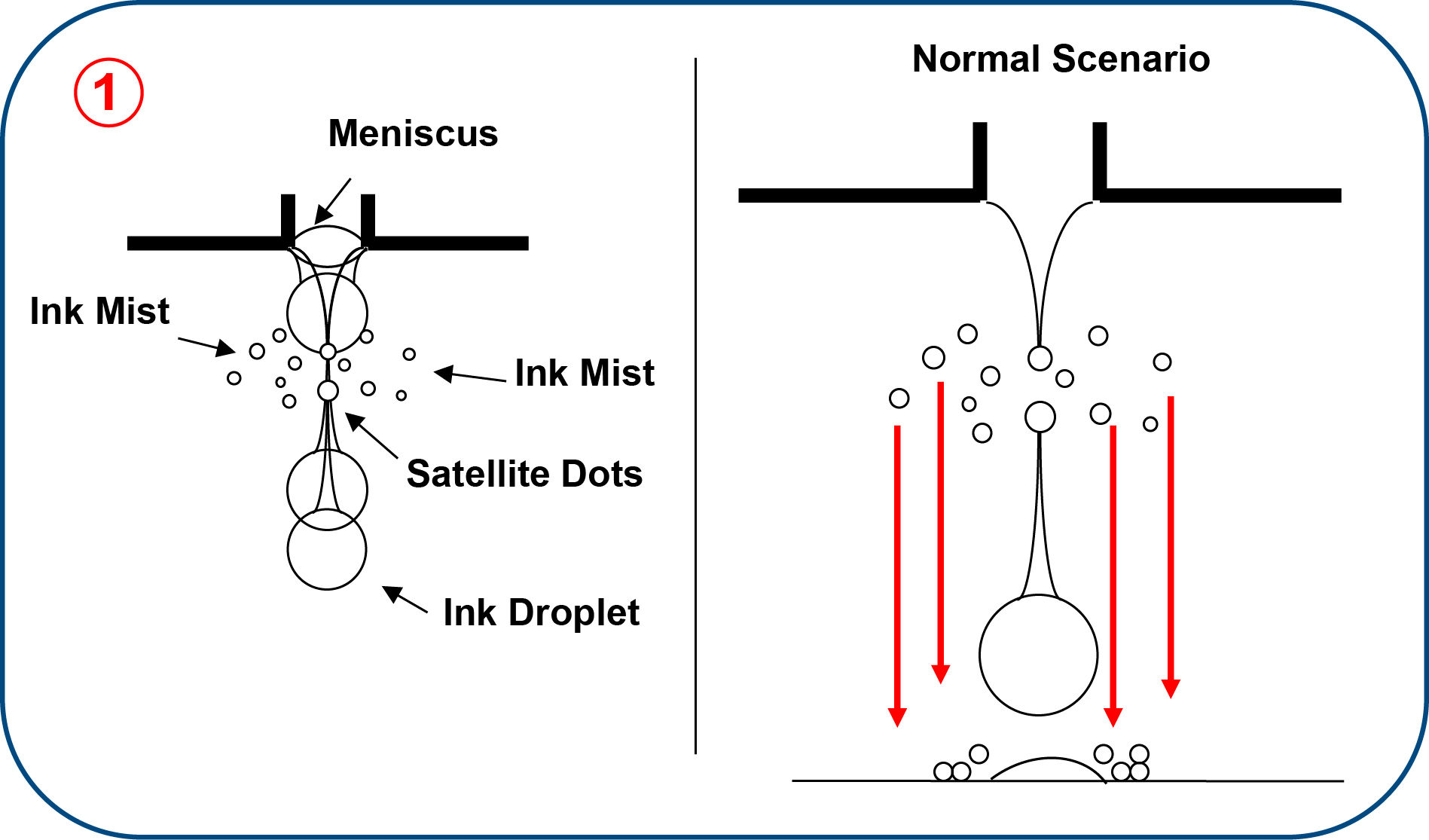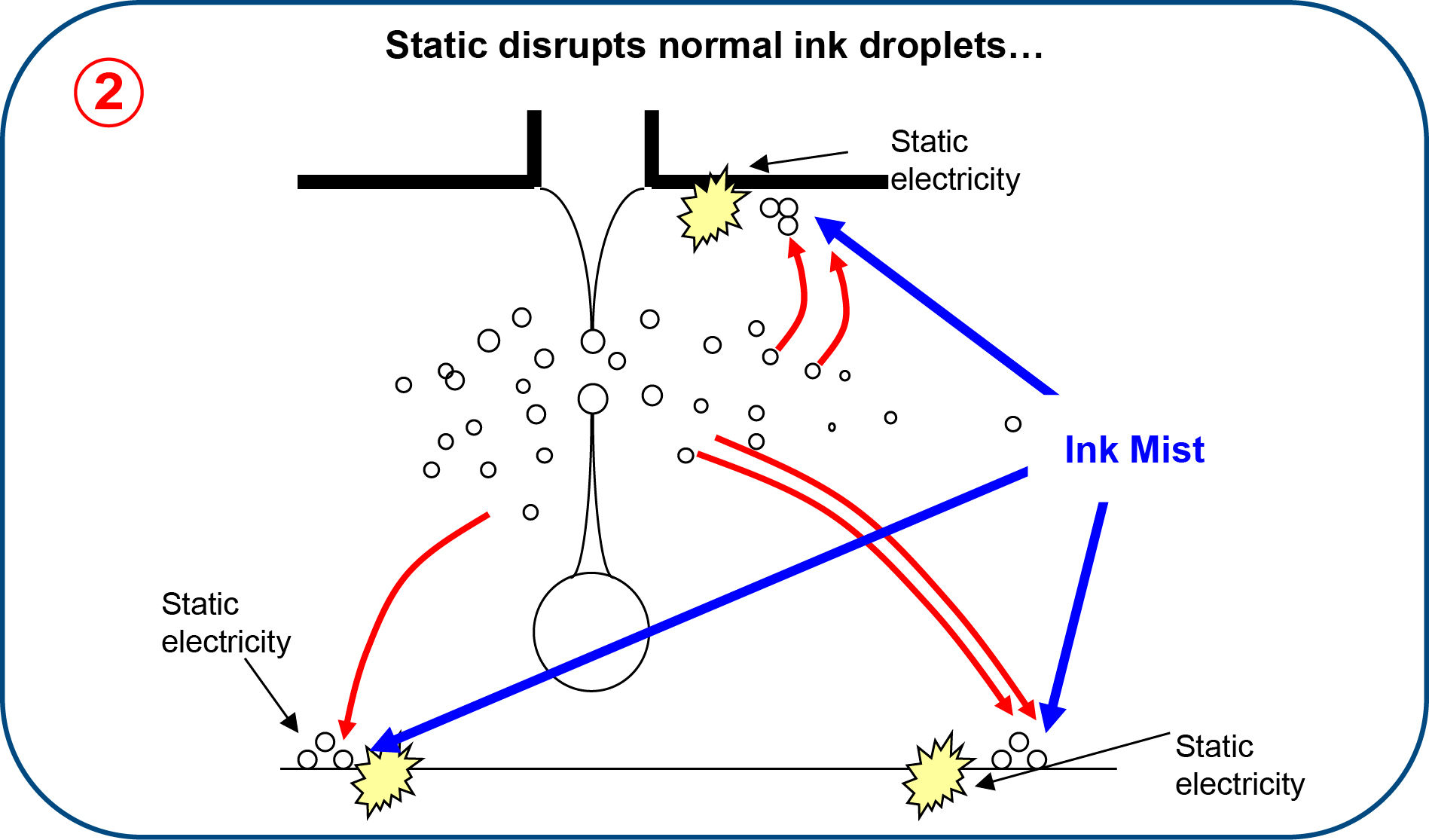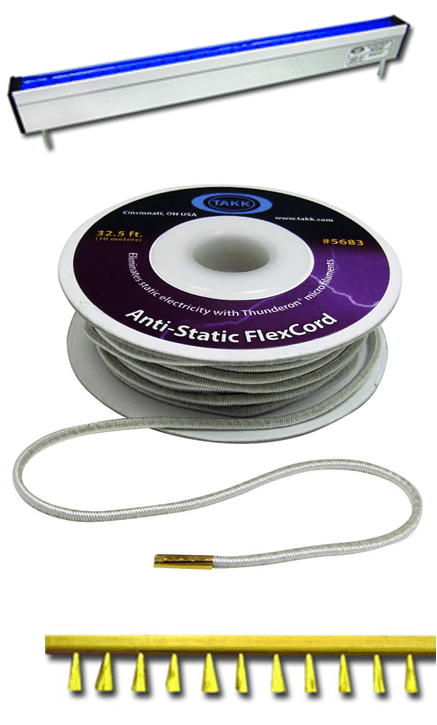Static on your printer can cause a number of issues that compromise print quality, particularly in the dry winter months. Understanding the underlying causes of static and developing techniques for managing static’s effects can help ensure consistent print quality and productivity.
What Causes Static?
Static can be caused by a number of sources, including friction from the media traveling across the platen, from pressure where the media moves between the pinch and grit rollers, and from detachment, when the media is unwound from it’s core.

What Does Static do to my Printer – and Prints?
When static electricity is introduced, it attracts the smaller ink mist satellite drops causing them to deviate from the normal fall pattern. These drops can stick to the printhead, eventually clogging nozzles and causing drop out. They can also scatter when attracted to locations of static on the media, causing a blurring effect to the print. In addition, static can create pinch roller marks and can even damage printer components, including side sensors, linear encoders and printhead elements.


How Do I Prevent Static?
First, you need to create an optimal print environment. Use your printer at an ambient temperature of 20 to 32ºC (68 to 90ºF). If the machine is used at an ambient temperature lower than 20ºC (68ºF), then depending on the type or width of the media, wrinkling or temperature-caused unevenness may occur.
Even when not in use, you should keep the environment at a constant temperature and relative humidity. Temperatures of 5 to 40°C (41 to 104°F) are ideal and a relative humidity of 20 to 80% (with no condensation) will ensure performance. Temperatures that are too high may degrade the ink and cause malfunction. Temperatures that are too low may cause the ink to freeze and damage the heads.
You should also properly ground the printer and use media that is not prone to static.

Additionally, static suppression hardware (shown above) is available, including options from Takk Industries and Meech.
More detailed information on how to control static is available in our online guide to static suppression.

